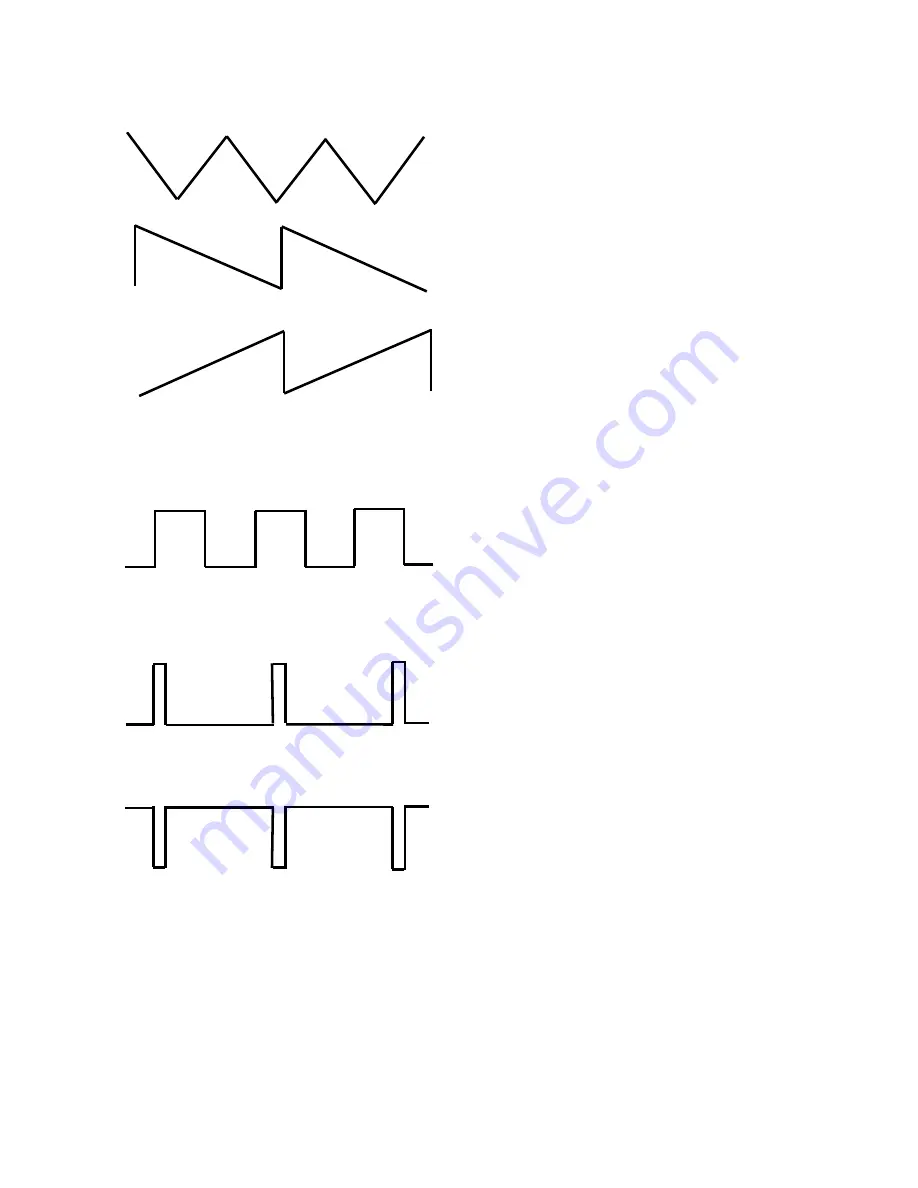
TRAX RetroWave Owner’s Manual
< 15 >
LFO Triangle Wave Output and Variations
The
triangle wave,
obtained with SHAPE control in its
central position, gives the smoothest vibrato, as its
shape is symmetrical.
The
reverse sawtooth
(obtained by turning SHAPE
control fully anticlockwise) produces a VCO tone with
a rapid rise and gradual fall in pitch, because the rise
and fall times of the wave shape are unequal.
Similarly, the
Sawtooth
(produced with the control
knob at the opposite extreme) makes the tone rise
steadily, then drop abruptly.
LFO Square Wave Output and Variations
The square wave and its pulse variations are best for
choppy effects such as trills and two-tone sirens.
The further the LFO depth control is advanced, the
further apart in pitch the two alternating tones
produced by the VCO become. The SHAPE control at
centre position gives equal durations for each of the
two tones.
Thin pulses are obtained by turning the SHAPE
control to the anti-clockwise position. The
mark
is
much shorter than the
space
of each cycle, to give a
short, high frequency “blip”, and a longer low-
frequency tone from the VCO.
At the opposite extreme, we have long mark and short
space portions of the waveform, giving a long high
tone, and a short burst of the lower tone.
Frequency range switches are provided, the
Low
setting giving a frequency range of a fraction of a Hertz
through to around 7Hz, and the
High
setting ranges from several seconds to about 170Hz.
Lower speeds give the most musical and playable effects, but the high-speed range enables you to
create some really dirty sounds, some of which are only musical over part of the keyboard range.
A yellow LED monitor gives a visual indication of the running speed; this is useful for stage performances
when setting up patches, etc.
Mark
Space
Space
Mark
Mark
Space


























